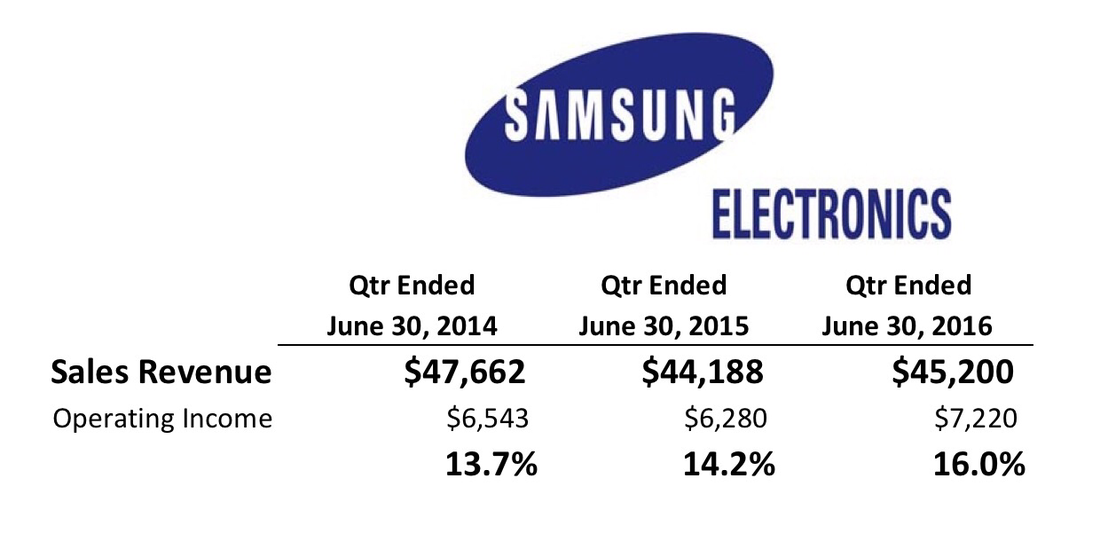The only reason to eliminate customer choice is to cut costs. Which makes sense since fracturing your product line into two separate models with different components is going to increase material costs. Not too mention that the production yields on those curved screens were reportedly horrific. Most people would assume that since Samsung is charging a higher sales price for the Galaxy S7 Edge that everything is okay. However, I would argue that even with the higher sales price that Samsung gross margins on the Galaxy S7 Edge are worse than the regular S7 or even the Galaxy S6. In fact, the Galaxy S7 Edge could be the least profitable Galaxy S model that Samsung has ever sold.
So how could Samsung show improved Q2 profitability while offering their least profitable Galaxy S phone ever? Easy, elsewhere Samsung has also been cutting the low-margin dogs. Samsung has been saying for a while now that they were going to be more disciplined and start eliminating low-volume or low-margin products in order to improve profitability.
And they have. If you look at their last three Q2 quarterly income statements you’ll notice that their margin improvement started in 2015 before the Galaxy S7 Edge was even offered for sale. What you have is a mix change where you are displacing low-margin products with the higher margin premium phones.
So let’s say that the gross margins on the Galaxy S6 were 40% but they fell to 35% with the introduction of the Galaxy S7 line. If you eliminated a huge portion of your sales that were at 20% gross margin and replaced it with products at 35% you’d still show a nice healthy margin increase. This explains the paradox of the Galaxy S7 being at a lower gross margin and Samsung showing a margin improvement in the aggregate. This is the financial magic of product discipline, much to the chagrin of the fans of those low-volume products.
So why do I think that the Galaxy S7 product managers are having a gross margin crisis just because they decide to converge the S7 line? Because over the last few years, Samsung has sought to maximize revenue growth by offering each segment of the market the product of their choice. That’s part of the reason why they offered so many low-margin products.
The only reason Samsung would risk alienating a segment of their Galaxy S7 market by going to only the curved edge design is because their margins are below what they should be. Once 2016 is over and they’ve exhausted all the gains that they’ll get from this premium phone mix change, they can set themselves up for another profit boost next year by going either all flat or all curved. It’s what I would do.




 RSS Feed
RSS Feed